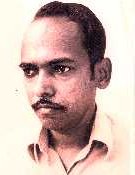

Home | Biodata | Biography | Photo Gallery | Publications | Tributes
Reviews

 |

Home | Biodata | Biography | Photo Gallery | Publications | Tributes Reviews |
 |
The Christian Institute for the Study of Religion and Society has brought out Dr Richard Taylor's book on Indian Paintings in the well known series called Confessing the Faith in India. Earlier volumes in the series include works such as the Theology of Chenchiah, the Theology of Chakkarai and The Contribution of E. Stanley Jones. Volumes in the series are intended to deal with Indian response to Christ.
Dr Taylor has tracked down certain Christian Paintings produced in the courts of the
Moghul kings during the sixteenth and the seventeenth centuries. The Moghul school of painting which flourished for about a hundred years from the
time of Akbar to the early years of Aurangazeb produced paintings depicting Jesus some of which were copies of European paintings brought to the court by
Jesuit priests. Akbar and Jehangir encouraged tolerance of other religions and were very much interested to hear about Christianity from Jesuit
priests. The book contains four illustrations belonging to the Moghul period.
some of which were copies of European paintings brought to the court by
Jesuit priests. Akbar and Jehangir encouraged tolerance of other religions and were very much interested to hear about Christianity from Jesuit
priests. The book contains four illustrations belonging to the Moghul period.
The book contains a reference to a Christian painting owned by the Vijayanagar king Venkata II at the beginning of the seventeenth century and hung in a prominent part of his palace at Vellore.
From the seventeenth century, the scene shifts to the twentieth century, to Bengal the home of Jamini Roy. Dr Taylor devotes a full chapter to modern Indian painters who are not Christians but who have painted pictures of Jesus. Many of these outstanding painters had chosen Christian themes in order to portray the nature and predicament of man in society. Outstanding artists like K.C.S. Paniker of Madras have produced many paintings of Jesus. A former student of the Madras Christian College, Mr Paniker is quite familiar with the Bible. When he wanted to depict suffering and pain he chose to paint Jesus. During the 1950's Paniker used to paint figures with disproportionately large heads and one such picture is reproduced in the book in black and white. Unfortunately the original does not exist any more. The chapter includes the works of a dozen well known painters such as Ravi Varma, Nandalal Bose and M. Reddeppa Naidu.
Paintings of Jesus by Indian Christian artists is dealt with in the chapter entitled "Christian Paintings". Dr. Taylor discusses the works of Angelo da Fonseca and Alfred D. Thomas who made serious efforts during the 1930's to find Indian roots for Christian painting in India. They sought to create authentic Indian images of Christ retaining the universalities of Christ. Christ was often portrayed in Indian clothes, as talking to typical Indian villagers and set in typical Indian landscape. The chapter deals with more than a dozen modern Indian painters who are Christians and who have painted figures of Christ. The works of Jyoti Sahi, Frank Wesley, Sister Clare and others are discussed in this chapter. The main concern of Sister Clare has been to spread Christian bhakti among the Indian minds.
Dr. Taylor devotes the last chapter to what he calls bazaar and devotional painting. The comparative affluence of a section of Indian Christian is of recent origin. The village Christians are far from affluent and they use mis-produced traditional pictures printed at Sivakasi as objects of devotion in their homes. In many of these paintings Christ is portrayed as having blue or brown eyes, light hair and fair complexion. The fact that such representations of our Lord are accepted by village folk offends the taste of sophisticated Christians.
There is a strong folk tradition to India where different deities are represented in different colors ranging from dark blue and green on one side to pink and blue on the other. Such conventions are accepted by the villagers without any interpretation of color. Very few villagers would have seen light-skin and blue-eyed foreigners and realized that the colors in the paintings they possess closely resemble an European. While the Hindus decorate their homes with a calendar picture of a popular deity like Muruga, a Christian would go in for a picture depicting a Christian Theme.
The book is illustrated in black and white with reproductions of a dozen modern paintings and four Moghul miniatures. One hopes that Dr. Taylor will bring out in future the entire collection of Indian paintings discussed on his book in a separate volume with plates in black and white and in color.